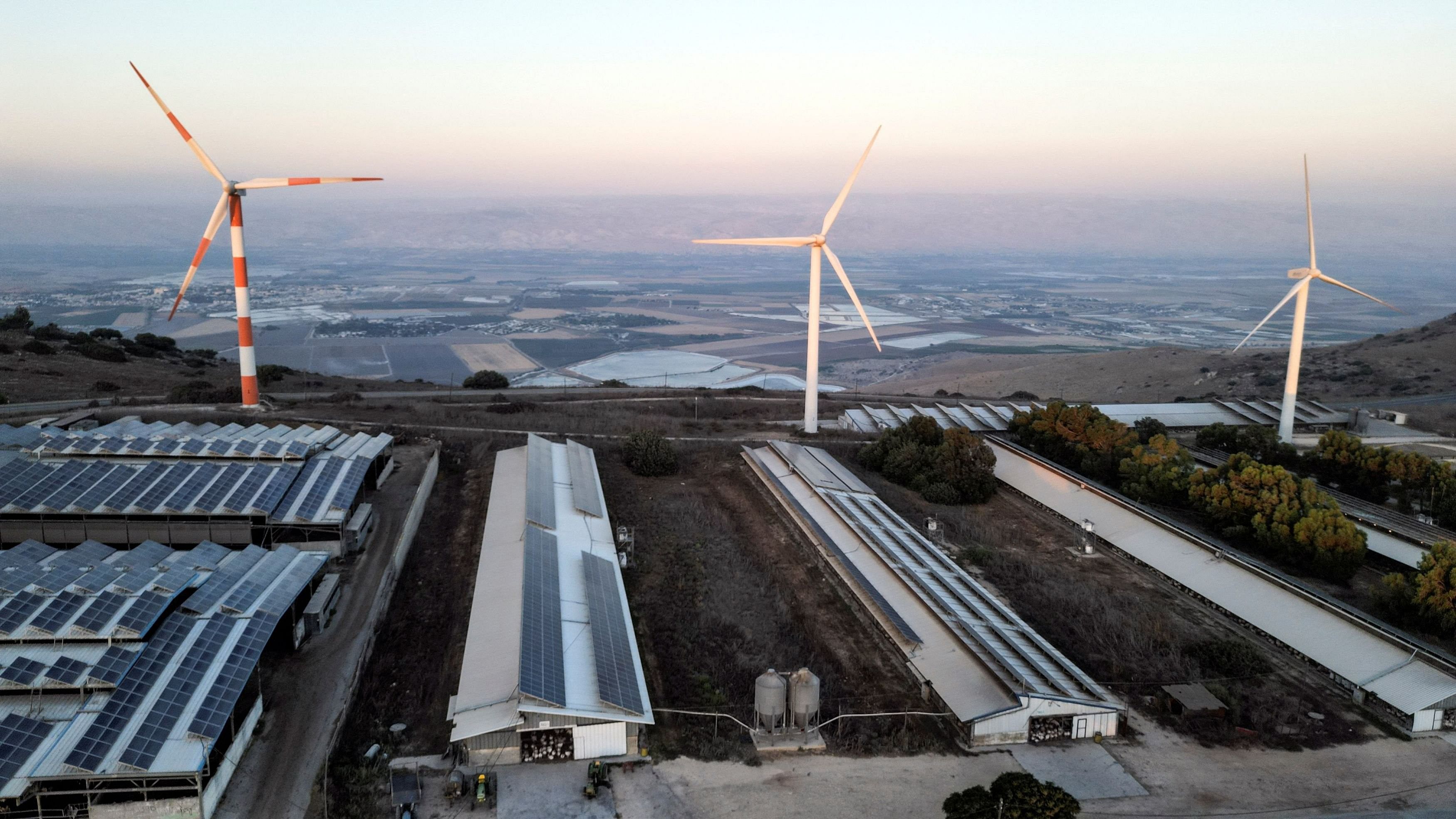
Representative image of wind turbines and solar panels on the rooftops.
Credit: Reuters File Photo
Mumbai: India’s wind and solar generation needs to grow five times by 2030 to align with the target of 1.5°C, according to a new study conducted jointly by Climate Analytics and NewClimate Institute.
Across 11 countries that account for over 70 per cent of current wind and solar power, the technologies need to grow five-fold by 2030 (three times faster than current yearly rates) and eight-fold by 2035 to meet global climate goals.
The 11 countries are Australia, Brazil, China, Germany, Indonesia, India, Mexico, Nigeria, Türkiye, South Africa and the United States.
The report aims to guide governments as they present new climate targets following a COP28 commitment to triple renewables in line with 1.5°C by 2030.
“India has made impressive progress on wind and solar but would need more international climate finance to scale them five-fold to over 600 GW to meet growing demand and move away coal dependence. Enhanced international cooperation, including the provision of grants and concessional finance help to mobilise private capital, is urgently needed to ensure emerging and developing countries benefit equally from the renewables rollout,” according to a press statement.
Across the 11 countries, wind has a key near-term role, providing more electricity than solar until the mid-2030s in a 1.5ºC aligned transition. By 2050, solar becomes dominant, providing around half of total electricity generation, and wind around a third.
“The record-breaking success of renewables in China has pushed the country to the verge of peak emissions. But to pass this peak and bring emissions down at the pace needed for 1.5°C, China would need to beat even its own personal best and deploy wind and solar even faster,” says lead author Dr Neil Grant of Climate Analytics.
“Wind and solar are the bread and butter of the energy transition and represent the most powerful tools in our toolbox. As countries update their climate targets, sending a strong, clear message on the central role of wind and solar could be the defining policy action in getting the world on track for 1.5°C,” says Bill Hare, CEO, Climate Analytics.